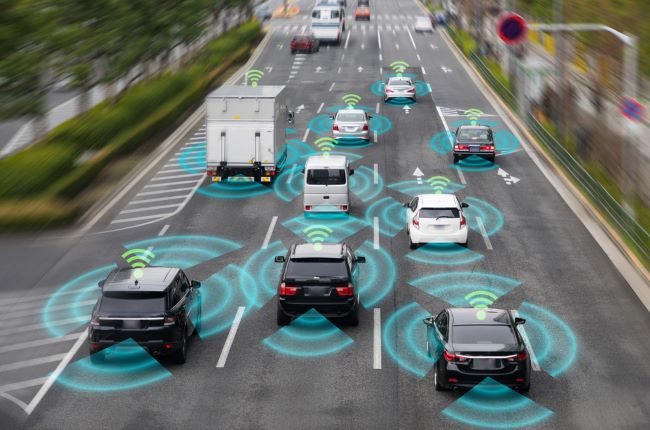
By: Simon Osborne, Global Marketing Manager, Electronic Materials
It’s pretty astonishing that one seemingly insignificant part can be an essential component for many high-tech electronic products that are in production today. Without these little housing parts, your mobile phone won’t function properly after you’ve dropped it for the first time, or your motherboard might blow due to extreme temperatures. Did you know there is a small but savvy solution that protects your electronics from outdoor elements, vibration, and shock? Here’s just a few examples of some highly innovative products you’ve heard of in the news, but don’t really know some of the intimate, inner workings of the technology to maintain its function. Our Materion Electronic Materials team is here to enlighten you.
When we say smart, these glasses are the most advanced “focals” history has ever seen. As you might already know, smart glasses are basically mini computers embedded into glasses and worn to add important information next to the wearers line of sight. It’s really nothing short of amazing. Smart glasses can even control or retrieve data from other devices or computers. These uber-cool glasses can support wireless technologies like Bluetooth, Wi-Fi, and GPS. Smart glasses have been around since 2012, but the general public does not usually see them for sale in the marketplace; even though the price has come down considerably, and they’ve evolved over the last 8 years to look just like a regular pair of good old-fashioned “dumb” glasses. In short, modern smart glasses are effectively wearable computers which now have the ability to run self-contained mobile apps. If you’re a tech-head like me, I’m sure you’re wondering how smart glasses superimpose information onto the wearers field of view? The technology is achieved through one of three ways:
Materion readily supplies both the Defense and Smart Wearables industries with protective solutions to achieve augmented reality technology. Materion has developed a hermetic optical cover lid assembly that addresses the light-sensitive requirements for many smart electronic devices. Bring us your challenge and we have the technical expertise to bring the right solution to life for almost any smart device. Referred to as Visi-Lids™ covers, these are a commercially available, hermetic optical cover lid assembly to protect smart glasses by hermetically sealing the sensitive components enclosed within the package. Visi-Lid covers allow data to be transmitted through anti-reflective coated windows.
Lidar is an engineering method for measuring distances by illuminating the target with laser light and measuring the reflection with a sensor. Wavelengths and differences in laser return times are measured and used to make digital 3-D representations of the target for automatic navigation around objects. This technology is responsible for providing an automatic driving solution without human interaction needed, touting added safety, security and mobility. Self-driving vehicles are still being tested for autonomous driving now headed by a company called Waymo, which at its inception began as the Google Self-Driving Car Project in 2009. Materion's Visi-Lid covers protect the sensors used for this technology by hermetically sealing the sensitive components within the enclosed package, and allow data to be transmitted through anti-reflective (AR) coated windows.
Optical microelectromechanical systems combine MEMS with micro-optics; this technology involves sensing or manipulating optical signals on a very small size scale using integrated mechanical, optical, and electrical systems to project images onto a large screen. Typical end use products for optical MEMS technology include cellphones, large-screen projection displays via television or movie screens, smart glasses and more.
So, what do these technologies all have in common? A little protective housing part known as Visi-Lid covers. Developing a custom Visi-Lid cover for protection of these various electrical applications is our expertise. This is not an off-the-shelf product but a proven, protective solution for all your electronic component needs. Materion manufactures AR coated, glass hermetic assemblies, accompanied by an attached solder for high-reliability hermetic sealing. Materion is the premier technical product development partner, working in close collaboration with our customers to help advance their digital projects with ease.
Todd Haselton "Google unveils new $999 smart glasses for businesses, undercutting Microsoft’s HoloLens on price," May 2019, CNBC.com, NBCUniversal, https://www.cnbc.com/2019/05/20/google-glass-enterprise-edition-2-announced-price.html
“Smart Glasses.” Wikipedia, Wikimedia Foundation, October 1,2020, https://en.wikipedia.org/wiki/Smartglasses
“Google Glass.” Wikipedia, Wikimedia Foundation, October 3,2020, https://en.wikipedia.org/wiki/Google_Glass
“Lidar.” Wikipedia, Wikimedia Foundation, October 4, 2020, https://en.wikipedia.org/wiki/Lidar
“Augmented Reality.” Wikipedia, Wikimedia Foundation, October 4,2020, https://en.wikipedia.org/wiki/Augmented_reality
“Optical Head-Mounted Display.” Wikipedia, Wikimedia Foundation, August 15,2020, https://en.wikipedia.org/wiki/Optical_head-mounted_display
“Head-Up Display.” Wikipedia, Wikimedia Foundation, August 31,2020, https://en.wikipedia.org/wiki/Head-up_display
“Waymo.” Wikipedia, Wikimedia Foundation, October 5,2020, https://en.wikipedia.org/wiki/Waymo
“Microoptoelectromechanical Systems.” Wikipedia, Wikimedia Foundation, August 31,2020, https://en.wikipedia.org/wiki/Microoptoelectromechanical_systems#:~:text=Microoptoelectromechanical%20systems%20(MOEMS)%2C%20also,combination%20of%20MEMS%20merged%20with